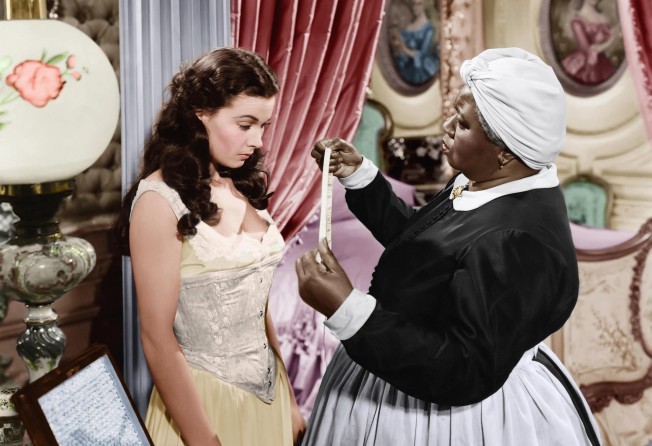
Rewind film: Gone with the Wind, directed by Victor Fleming and George Cukor

Gone with the Wind
Clark Gable, Vivien Leigh, Leslie Howard
Directors: Victor Fleming, George Cukor
Hollywood has come a long way in its depiction of slavery. British director Steve McQueen's latest film, 12 Years a Slave, has been hailed as the most powerful cinematic portrait of American slavery ever painted. There has been debate over how and when slavery should be shown, but audiences can now see fully formed, narrative features with sympathetic, complex enslaved protagonists at their centre.
Not so in 1939. The slaves in David Selznick's adaptation of Margaret Mitchell's novel Gone with the Wind are mostly helpless, grossly sentimental characters, often depicted in silhouette toiling away faithfully in the fields. At the time of its release, it was neither unusual nor uncouth to depict the South as a pastoral paradise of virtue and harmony - and what came after as the Fall of Eden and not the emancipation of a people.

The story is simple: a spoiled southern belle spends the civil war pursuing a married man, only to realise she was probably better off all along with her canny, dashing, third husband, Rhett Butler.
So why does Gone with the Wind endure? Because although slavery is its foundation, womanhood is its heart. As a commentary on politics, the film is flawed, but as an observation of gender, it resonates deeply. In Scarlett O'Hara, one of cinema's most memorable characters, we find a complicated firebrand - spunky, steely, selfish, and terribly flawed. Scarlett, who barters and bends sexual mores to get what she wants, poses the central question at the start of the movie: "Why does a girl have to be so silly to catch a husband?"
She spends the rest of the film exchanging silliness for strength.
Like Edith Wharton's House of Mirth, and so many other feminist novels, the real battle here is not between North and South, but between Scarlett's lust (for sex and power) and her reputation. "With enough courage you can do without a reputation," Rhett tells her.
The movie is full of Scarlett's foils: first Melanie Hamilton, whose pure goodness is infused with a strength Scarlett can't understand, and then Rhett, who sees her failings but can't turn away.
The performances are stellar (Hattie McDaniel was the first African-American to win an Oscar, for her portrayal of the sensible Mammy), but the standout is Clark Gable, who seems to have been born to portray Rhett Butler.
Is Gone with the Wind a racist depiction of the American South? Yes, but it's also sensational, moving and gorgeous, so frankly, I don't give a damn.
Madeline Gressel